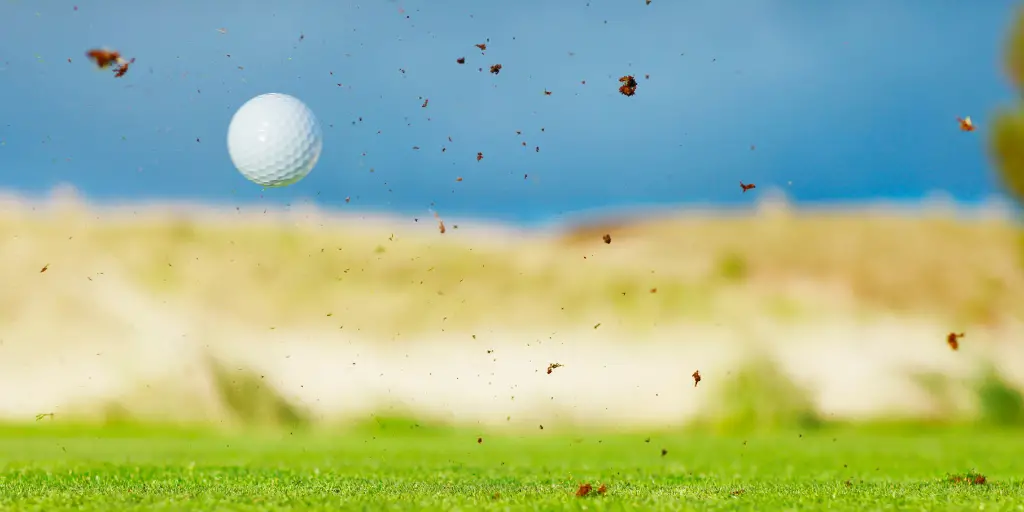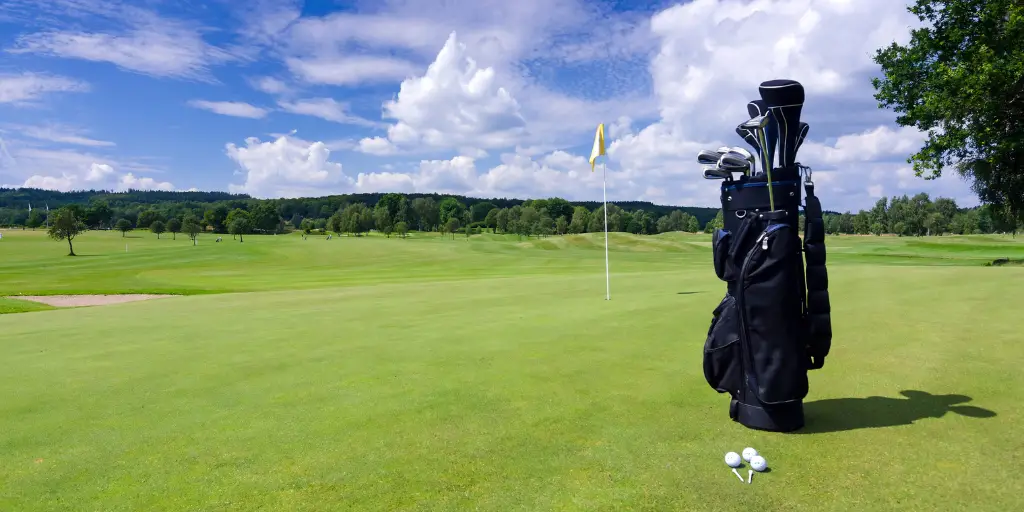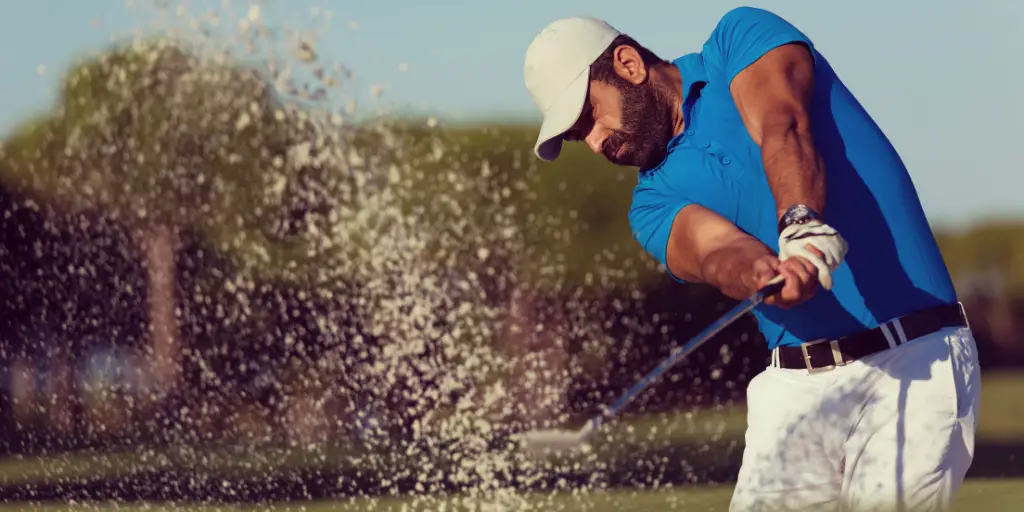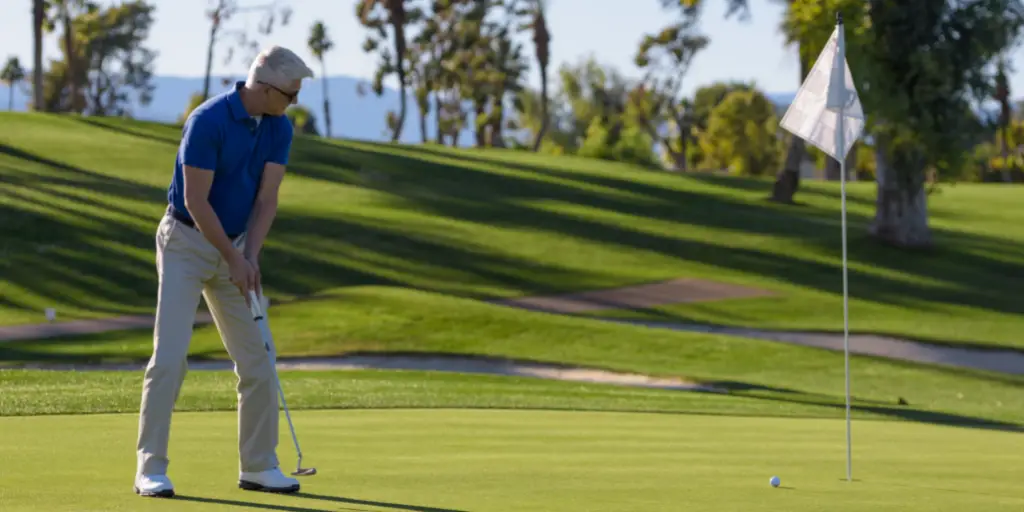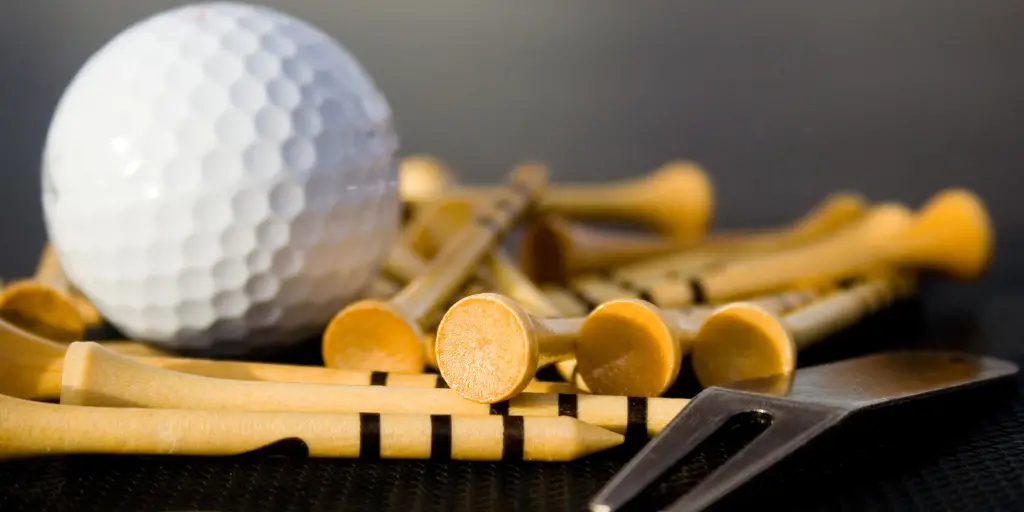One of the coolest shots to see a professional golfer make is when they hit an approach shot a few yards past the hole just to see the ball zip back to within inches. It looks like the ball is on a string that gets yanked as soon as it gets the exact right distance past the hole.
Or when you see someone chip a ball that looks like it’s going to run right off the green and all of a sudden it checks up to a complete stop just in time to leave a 2 foot birdie putt.
The only problem with these shots is that they are fun to watch on television, but they seem next to impossible to pull off in real life.
We can’t say that after reading this tutorial your next wedge shot from 80 yards out is going to go 85 yards and then spin backwards 15 feet and stop next to the hole.
We can, however, say that following the steps of this tutorial will help you learn how to put backspin on a golf ball.
Learning how to put backspin on a golf ball is much more important than the show that some of these shots give you.
Backspin is how you stick the ball on the green, it is how you check the ball up, and it is how you get the ball flight that you are looking for in a wedge.
Step By Step Instructions
1. Check Your Equipment
You are not going to be able to put backspin on your shots without the right equipment. You need a high lofted club with a groove design that promotes optimal friction and spin on your shots.
Many wedges are adding extra grooves low on the club face, deeper and sharper lines on their grooves, and a higher density of grooves on the face to create optimal friction and spin.
Precision milling and some other new technologies in the past few years have allowed manufacturers to create incredible spin rates within legal club parameters.
One of these clubs will go a long way in helping you create the backspin you want with your wedges, check out this article to find our complete guide to wedges.
The other thing you need is a good golf ball that promotes high spin. If you are using range balls, x-outs, or balls that you found in a nearby water hazard then you will not produce the type of backspin that you need. Find a good ball that promotes spin so that when you make good, solid contact you get the results you are looking for.
2. Club Head Speed
This is maybe the simplest factor that helps you to create adequate backspin. When you are watching golf, you notice that you see backspin more on shots from 80 to 100 yards out than you do from 20 or 30. The reason is that with a highly lofted club, players can take a full speed swing at the ball and it is that speed that helps you to create maximum spin. It makes sense logically and it plays out practically, you get more spin when you swing the club head faster.
3. Descending Angle of Attack
When you are playing a wedge and trying to get backspin on the ball, it is absolutely vital that your divot occurs in front of where the ball was. In fact, the bottom of your swing arc should actually be about 3-4 inches in front of your lie to get optimal spin. You put the ball in the back of your stance, take a steep back swing, and swing down on the ball, making contact with the ball first, and creating about a 1 inch deep divot a few inches in front of where the ball was.
4. Clean Lie
You are probably not going to create a lot of spin out of the rough, on a rainy day, or when there is a lot of condensation built up on your club or the ball. All of these things take away from the friction that you need to create backspin. A clean lie on a dry day aiming to a hole on an upslope with a headwind is the perfect condition to spin your ball enough to see it come back towards you.
5. Friction
When I first started playing golf, I remember purchasing a lob wedge from Walmart that was described as an illegal golf club. Basically the designer built a normal lob wedge and then covered the face with a rough, almost sandpaper type material to create as much spin as possible.
The club worked.
I remember betting a friend of mine that I could hit a shot that spun backwards a little, and with all of the friction that the club created, I did just that. I stopped using the club, but it taught me something about backspin…You Need Friction!
It is the friction between the club face and the ball that gives you that extra spin rate to make the ball stop or spin backwards on the green. While I would not suggest purchasing an illegal club, I would suggest understanding the need for friction in this discussion of backspin and figure out how to create as much as possible.
6. Spin Loft
Your spin loft is the combination of the attack angle of your swing combined with the actual loft of your club. Pitches and chips should have about a 7-degree attack angle and somewhere between 50 and 60 degrees of loft. If you are coming in at the ball at a 10-degree angle with 60 degrees of loft, the “spin loft” will be too high and you will not create enough friction. Your best options are to keep your attack angle between 6 and 7-degrees with a lob or sand wedge to create optimal spin loft.
Check out this video from the Chris Ryan Golf for a great beginner’s tutorial about How To Put Backspin On a Golf Ball:
Drills To Help You Put Backspin
Impact Bag Drill
The impact bag drill will help you to square your club face at impact. You are not going to put backspin on a ball without hitting the ball with the face square. With your backspin shots, you are not looking to draw or fade the ball, you are looking to knock it up in the air with the maximum spin possible so that it sits or rolls back on the green. You need your face to be as square as possible to make this happen.
Here is a great video to show you how to use an impact bag:
Weighted Club Drill
The purpose of this drill is simple…to help you create more swing speed. As was mentioned before, clubhead speed is a leading indicator of the amount of backspin that you can put on your shot, so doing some of these drills will help increase you swing speed without affecting your form.
This is a video that shows you some ways to use your weighted club correctly:
Tee Drill
For this drill all you need is 2 tees. Place 1 tee about ½ inch past the ball and flush to the ground where you can still see the top. Place the other tee just outside of the ball but even with the first tee that you placed. Your goal is to break the first in half and to have the divot you created start even with the second tee that you placed.
The divot you make should be about 5 inches long and not more than 1 inch deep. This drill forces you to create a downward angle of attack, hit the ball first, and create a shallow and long divot, all things that you need to create the backspin that you want.
Final Thoughts On How To Put Backspin On A Golf Ball
Getting backspin on your wedge shots is both extremely important and also a lot of fun. Doing some of those drills and then heading out to the range to practice hitting the ball first will go a long way in getting you the backspin that you are looking for and one day you may even be able to pull the ball back on a string and stop it right next to the hole.
We hope that you enjoyed this tutorial and learned a lot more about the angle of attack, friction needed, and how important choosing the right club can be in your quest for more backspin. If you learned something here, drop us a comment and let us know what has helped you the most. If you have a drill that you do or a tip we forgot, comment with that as well and let’s try to help as many people as we can learn how to get that needed backspin on your wedge approach shots and chips.

